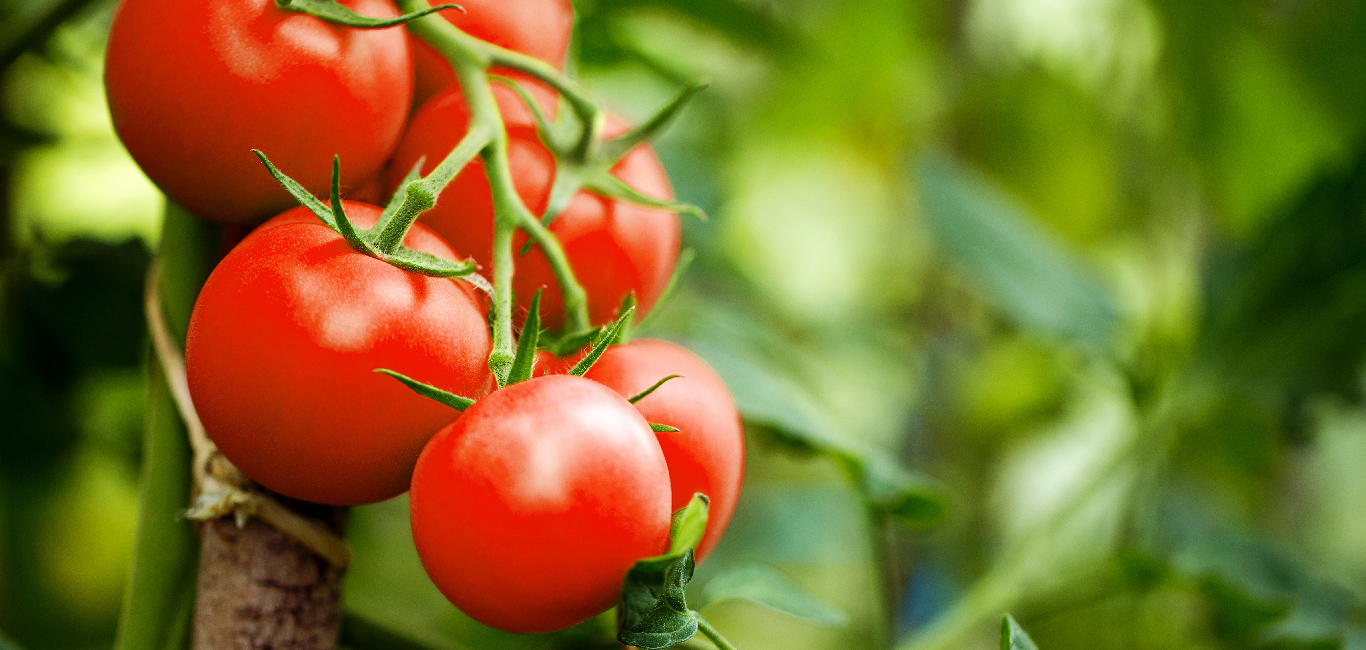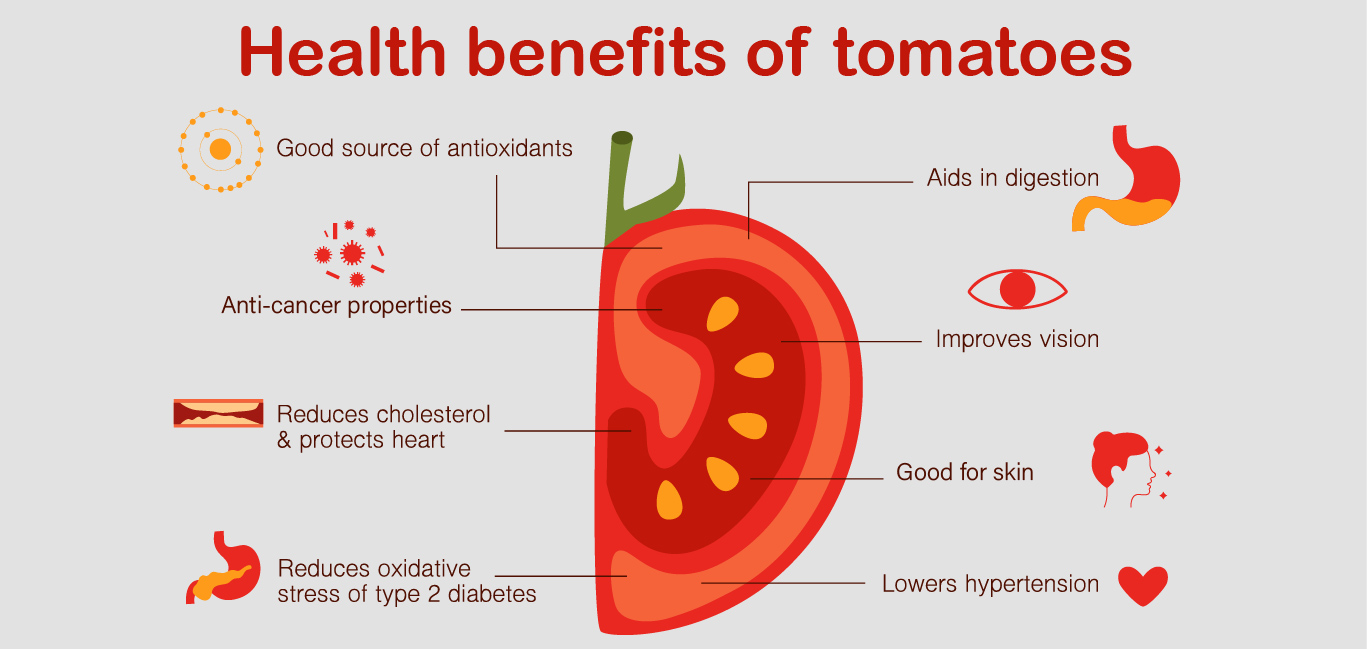
Playing with tomatoes is always fun, be it on the streets of Buñol in Spain during the famous La Tomatina festival or on the kitchen slab, adding colours to different recipes.
Over the last decade, tomatoes have been the subject of research for its health benefits. Several studies have found this fruit (yes, it is a fruit), apart from adding a vibrant red to our diet, also contributes bioactive compounds that are important to our health.
Read more about colourful diets here
Vidhyapriya R, founder and nutritionist, Nutricomms India, Bengaluru, says, “The bio active components and nutrients in it help with smooth bowel movements, reduce high blood pressure, help with blood circulation, and more.
“They are rich in a plethora of nutrients such as vitamins A, C, E, K and B complex, minerals, fibre, amino acids, carotenoids and phytosterols that impart other health benefits,” she adds.
They have also been linked to the prevention of prostate cancer. However, with time the link has weakened, as researchers were unable to come to a consensus due to limited evidence. The American Institute of Cancer Research, however, says that there is probable evidence that consuming vegetables rich in lycopene and carotenoids like tomatoes may prevent certain types of cancer.
Cardiac health and tomatoes
These are also good for heart health because of their lycopene content. Several studies and human clinical trials have shown that drinking tomato juice can help counter LDL (bad cholesterol) in the body and improve HDL (good cholesterol) levels.
Furthermore, most cardiac issues are caused by increased oxidative stress in the body. Antioxidants in tomatoes also help reverse the tide of reactive oxygen species (free radicals that react with other cellular molecules and cause damage to the cells) in our body. In doing so, they help keep other heart diseases at bay.
A 2022 review paper published in the journal Frontiers, found several studies conducted on individuals at risk of cardiovascular diseases. These studies had shown that lycopene in tomatoes significantly reduces platelet aggregation (the mechanism of clotting of blood within blood vessels).
Janani GV, consultant nutritionist at HealthifyMe, says that tomatoes are also rich in bioactive components such as flavonoids and carotenoids. These components help reduce platelet aggregation and LDL cholesterol, thereby lowering blood pressure.

Tomatoes alleviate exercise fatigue
New products arrive in the market daily to help with post-workout fatigue, but the red balls in your fridge could be a healthier, cheaper alternative to supplements.
“Having fresh tomato juice or a salad after workouts lowers fatigue due to natural antioxidants such as vitamins C and E, different types of carotenoids and phenolic compounds,” says Vidhyapriya.
Janani says that intense exercise routines can lead to increased oxidative stress after workouts. “This in turn increases the process of lipid and protein peroxidation (fatty compounds and protein changed into cell-damaging compounds by reactive oxygen) in the body,” she adds.
A 2021 study in the Journal of the International Society of Sports Nutrition found that all bioactive compounds in a tomato work in tandem to prevent lipid peroxidation post workout.
“The antioxidants present in tomatoes can delay, hinder, and prevent free radical oxidation, and convert them to harmless stable radicals that may prevent cancer and other chronic conditions,” says Vidhyapriya.
Tomatoes for healthy skin
Regular tomato consumption can give you supple skin. Studies have shown that tomatoes protect against UV radiation, which can trigger reddening of the skin or erythema. A 2019 study in the journal of Skin Pharmacology and Physiology, found that nutritional supplements from lycopene, phytoene and phytofluene, β-carotene, and tocopherols from tomato extract significantly helped lower UVB (one of the three UV rays from sunlight) induced erythema.
Over-exposure to sunlight can also cause itchy, dry and inflamed skin conditions referred to as atopic dermatitis. A review of the health benefits of tomatoes in the journal Biology reported that carotenoids, vitamin C and antioxidants in tomatoes help prevent UV radiation-induced skin damage such as acute atopic dermatitis.
Researchers also point out the effectiveness of carotenoids in tomatoes in preventing eye diseases. Janani adds, “Vitamin C, E, lutein and zeaxanthin in tomatoes help in the production of collagen which is responsible for improving the elasticity and strength of our skin.”
How and when to add tomato
Adding them to your diet can be simple and delicious. Start by incorporating fresh, sliced tomatoes into your salads, sandwiches, and curries. Roasted tomatoes can add a tangy flavour to your soups or pasta gravy.
Janani says that one should ideally consume one to two tomatoes or 150g a day. She recommends adding both cooked and raw tomatoes in one’s diet. “While uncooked tomatoes are high in vitamin C, cooking enhances the bioactivity of the carotenoids (a provitamin that is converted into vitamin A in the body),” she says.
However, it is best to avoid too many tomatoes in one’s diet if gastroesophageal reflux disease, irritable bowel syndrome, or frequent acidity is a concern. Janani advises caution with tomatoes for those with high uric acid levels, as they can experience sudden gout flare ups (severe pain, redness and tenderness in joints).

















